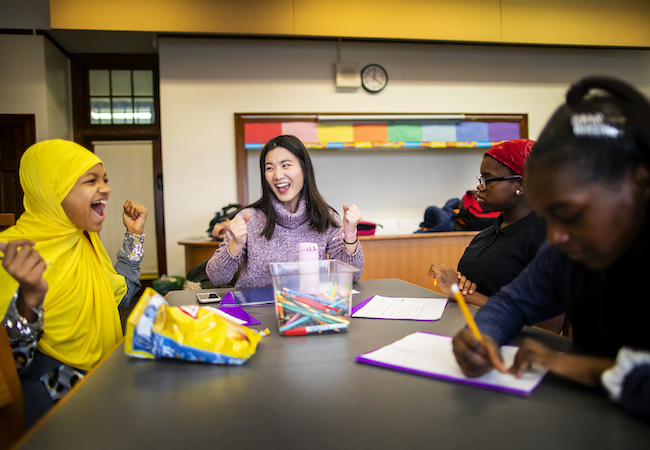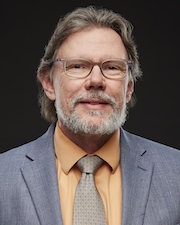Counseling mentors help Philadelphia middle schoolers explore possibilities

Shiyu Sun (center) is one of the 32 mentors in the Graduate School of Education’s Possibility Mentoring Program. Sun is now in her fourth semester working with groups of middle schoolers, like Ciani Patton-Collins (left), at the General George G. Meade School in Philadelphia. (Eric Sucar, Penn Communications)
How do kids think about what they might want to be when they grow up? Or what the path might be to fulfilling those dreams?
Those questions are at the heart of possibility development, an emerging field of research being pioneered by Penn GSE’s Michael Nakkula, professor of practice and chair of GSE’s Human Development and Qualitative Methods Division, and Andy Danilchick, director of Penn GSE’s Project for Mental Health and Optimal Development.
One approach for exploring possibilities is through possibility mentoring. For the last two years, Penn GSE counseling students have worked with teams of students at two Philadelphia middle schools to help the children think about their futures.
For example, students who love to play video games might think they want to be a professional gamer and realize through possibility mentoring that they could use that passion and skill to be an engineer who designs video games. “What are the steps between seventh grade and college in order to get there?” Nakkula says. “For that to become a reality, particular actions need to be taken along the way.”
The model has five steps: exploring interests, prioritizing interests, planning for action, taking action, and assessing progress. At the end of the school year the students make a field trip to Penn’s campus and present a project based on their individual interests.
“We don’t want to crush any dreams. What we’ll do is help them think: OK, you want to get to that pathway, what are skills that are really important to work on that might help you move towards that?” Danilchick says, like getting help with math, which can lead to better grades, which can open opportunities. “And all those things will help you in other ways as well.”
It’s difficult for kids to stay motivated to learn if they don’t see a reason for the learning, Nakkula says. “What if you’re living in poverty and you haven’t seen people go to college? That’s a very abstract idea,” he says. “The possibility mentoring makes that more realistic, a more grounded experience.”
Following the five-step model, GSE mentors work with small groups of three or four, forming relationships with individual students, and with the group, which makes it more likely that the teens will participate in the mentoring goals, Nakkula says. Small groups can be more successful than one-on-one, he says.
“If the kids come as a small team and build relationships with each other as well as their mentor, a kind of dynamic energy builds. We think the kids have more fun,” he says. “Also, with small group mentoring, you can reach many more students. But it does require more careful training.”

